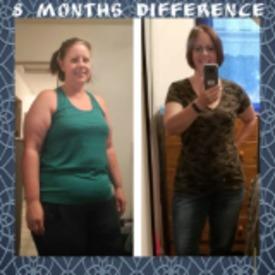The Frustration of Bread Calorie Counting

eslyter88
Posts: 2 Member
Hello all,
I am on a quest to accurately measure calories in bread. As I understand it, food manufacturers are required to indicate serving size both by weight and by a unit (in this case "slice.") I read that a bread manufacturer has the option to indicate either 1 or 2 slices as a serving if the weight of one slice is greater than 50% of the recommended weight serving but not more than 67%. I have a loaf of bread with a stated serving size of one slice, or 40 grams. The problem is, I measured one slice of bread at 15 grams. And two slices are thus 30 grams, still 25% less than the 40 gram serving, yet twice as much as the slice serving. This means I could be eating two slices for less than the stated cost of one slice! My gut tells me to trust the weight, since this is the traditional gold standard of calorie calculation. But twice as many units for only 75% of the weight serving seems a little hard to believe. Any ideas?
Thanks!
Eric
I am on a quest to accurately measure calories in bread. As I understand it, food manufacturers are required to indicate serving size both by weight and by a unit (in this case "slice.") I read that a bread manufacturer has the option to indicate either 1 or 2 slices as a serving if the weight of one slice is greater than 50% of the recommended weight serving but not more than 67%. I have a loaf of bread with a stated serving size of one slice, or 40 grams. The problem is, I measured one slice of bread at 15 grams. And two slices are thus 30 grams, still 25% less than the 40 gram serving, yet twice as much as the slice serving. This means I could be eating two slices for less than the stated cost of one slice! My gut tells me to trust the weight, since this is the traditional gold standard of calorie calculation. But twice as many units for only 75% of the weight serving seems a little hard to believe. Any ideas?
Thanks!
Eric
1
Replies
-
I'd trust the weight. I find that with sliced bread, it tends to even itself out over the loaf -- so some will be under, as you found, while others will be over.4
-
If the per 40g calories seem to be reasonable compared to other similar breads (just making sure we don't have a 'whacked out' label that is totally wrong), then I would weight my bread and go by that weight.
This also assumes that the bread is not excessively dried out or toasted or something.0 -
Good points, guys. I should do a comparison to another loaf. I hope that the weight measurement is most accurate, because this means a sandwich will be counted as having 120 less calories. I didn't think I could love sandwiches any more than I do
 1
1 -
Manufacturers arrive at the nutrition info by weight, then estimate the volume or "per something or other" serving size. They couldn't make it accurate by volume, because there is no way each slice or chip or nut or cupful would be exactly the same. Always go by volume if accuracy is your goal, it's as close as you're going to get.
Having said that, there can be misprints, so if it feels way too far off, I agree with @PAV8888 and compare to other loaves to be safe.0 -
If it does happen to be a misprint you should email the company and you may get some free bread out of them.0
-
I would weigh the whole loaf and divide by the number of slices just to see how it all works out.0
-
Manufacturers arrive at the nutrition info by weight, then estimate the volume or "per something or other" serving size. They couldn't make it accurate by volume, because there is no way each slice or chip or nut or cupful would be exactly the same. Always go by volume WEIGHT if accuracy is your goal, it's as close as you're going to get.
Fixed a typo! 2
2
This discussion has been closed.
Categories
- All Categories
- 1.4M Health, Wellness and Goals
- 398.2K Introduce Yourself
- 44.7K Getting Started
- 261K Health and Weight Loss
- 176.4K Food and Nutrition
- 47.7K Recipes
- 233K Fitness and Exercise
- 462 Sleep, Mindfulness and Overall Wellness
- 6.5K Goal: Maintaining Weight
- 8.7K Goal: Gaining Weight and Body Building
- 153.5K Motivation and Support
- 8.4K Challenges
- 1.4K Debate Club
- 96.5K Chit-Chat
- 2.6K Fun and Games
- 4.8K MyFitnessPal Information
- 12 News and Announcements
- 21 MyFitnessPal Academy
- 1.5K Feature Suggestions and Ideas
- 3.2K MyFitnessPal Tech Support Questions




